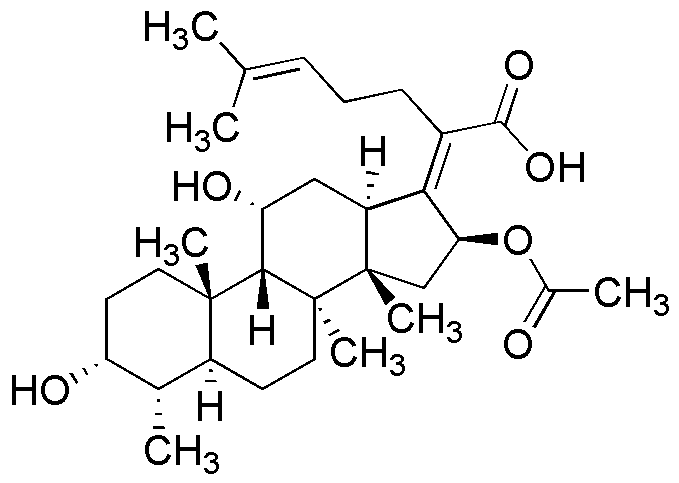Fusidic acid is widely utilized in research focused on:
- Antibiotic Treatments: This compound is primarily known for its effectiveness against bacterial infections, particularly those caused by Staphylococcus aureus, making it a valuable option in clinical settings for treating skin infections.
- Topical Formulations: Due to its low toxicity and ability to penetrate the skin, fusidic acid is commonly used in creams and ointments, providing targeted treatment for localized infections without significant systemic effects.
- Veterinary Medicine: Fusidic acid is also applied in veterinary practices to treat infections in animals, offering a safe and effective alternative for pet care, particularly for skin and soft tissue infections.
- Research on Antibiotic Resistance: Researchers utilize fusidic acid to study mechanisms of antibiotic resistance, helping to develop new strategies to combat resistant bacterial strains and improve treatment protocols.
- Combination Therapies: It is often used in combination with other antibiotics to enhance efficacy and broaden the spectrum of activity, providing a synergistic effect that can improve patient outcomes in complex infections.
General Information
Properties
Safety and Regulations
Applications
Fusidic acid is widely utilized in research focused on:
- Antibiotic Treatments: This compound is primarily known for its effectiveness against bacterial infections, particularly those caused by Staphylococcus aureus, making it a valuable option in clinical settings for treating skin infections.
- Topical Formulations: Due to its low toxicity and ability to penetrate the skin, fusidic acid is commonly used in creams and ointments, providing targeted treatment for localized infections without significant systemic effects.
- Veterinary Medicine: Fusidic acid is also applied in veterinary practices to treat infections in animals, offering a safe and effective alternative for pet care, particularly for skin and soft tissue infections.
- Research on Antibiotic Resistance: Researchers utilize fusidic acid to study mechanisms of antibiotic resistance, helping to develop new strategies to combat resistant bacterial strains and improve treatment protocols.
- Combination Therapies: It is often used in combination with other antibiotics to enhance efficacy and broaden the spectrum of activity, providing a synergistic effect that can improve patient outcomes in complex infections.
Documents
Safety Data Sheets (SDS)
The SDS provides comprehensive safety information on handling, storage, and disposal of the product.
Product Specification (PS)
The PS provides a comprehensive breakdown of the product’s properties, including chemical composition, physical state, purity, and storage requirements. It also details acceptable quality ranges and the product's intended applications.
Certificates of Analysis (COA)
Search for Certificates of Analysis (COA) by entering the products Lot Number. Lot and Batch Numbers can be found on a product’s label following the words ‘Lot’ or ‘Batch’.
*Catalog Number
*Lot Number
Certificates Of Origin (COO)
This COO confirms the country where the product was manufactured, and also details the materials and components used in it and whether it is derived from natural, synthetic, or other specific sources. This certificate may be required for customs, trade, and regulatory compliance.
*Catalog Number
*Lot Number
Safety Data Sheets (SDS)
The SDS provides comprehensive safety information on handling, storage, and disposal of the product.
DownloadProduct Specification (PS)
The PS provides a comprehensive breakdown of the product’s properties, including chemical composition, physical state, purity, and storage requirements. It also details acceptable quality ranges and the product's intended applications.
DownloadCertificates of Analysis (COA)
Search for Certificates of Analysis (COA) by entering the products Lot Number. Lot and Batch Numbers can be found on a product’s label following the words ‘Lot’ or ‘Batch’.
*Catalog Number
*Lot Number
Certificates Of Origin (COO)
This COO confirms the country where the product was manufactured, and also details the materials and components used in it and whether it is derived from natural, synthetic, or other specific sources. This certificate may be required for customs, trade, and regulatory compliance.


